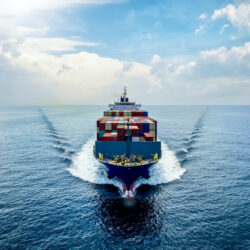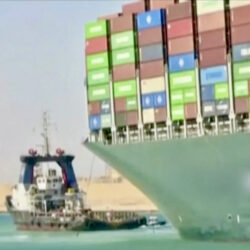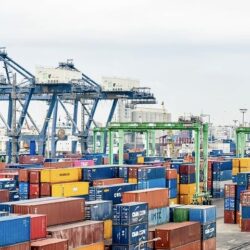Houthi attacks and drought significantly drive up container shipping prices

Container shipping prices are shooting up again. Extremely low water in the Panama Canal and ongoing attacks by Houthi rebels on ships in the Red Sea are to blame. Recent attacks by the United States and the United Kingdom on Houthi targets in Yemen will also provoke a backlash, it is expected.
The Houthi attacks started late last year. Dozens of container ships allegedly linked to Israel have already been bombarded by drones and rockets, in a sign of support for Hamas and the Palestinians. The ongoing violence is causing many shipping companies to avoid the Red Sea and Suez Canal, and sail around Africa instead. That detour takes a lot of extra time, making transport capacity scarcer and causing prices to skyrocket.
Bombing in Yemen
To take a stand against these attacks on an internationally important trade route – about 15% of all world trade passes through the Suez Canal – a series of Houthi targets in Yemen were bombed on 12 January. The United States and the United Kingdom acted jointly, supported by Australia, Bahrain, Canada and the Netherlands.
The attacks were carried out with fighter jets and missiles fired from a US submarine. Dozens of targets were strafed, including radar installations, drone and missile storage sites, and rocket installations. The Houthis confirmed that the capital Sanaa and the towns of Hodeida and Saada were hit. They have since announced they will strike back hard.
Steep rises in container prices
As a result of these tensions, container shipping prices between China and Europe are rising steeply. Whereas it cost around $851 to ship a 20-foot container in early December, according to the Shanghai Containerised Freight Index (SCFI), that amount went up to $1,497 just before Christmas. By the end of December, the cost of transport on this route had reached $2,694.
Low water levels in Panama Canal
The extreme drought in the area around the Panama Canal is also making things extra difficult for shipping. This important transit route between North and South America is experiencing exceptionally low water levels. In response, the Panama Canal Authority (ACP) has decided to reduce the daily number of ships that can pass through, and to adjust the permitted draught from 50 feet (15.2m) to 44 feet (13.4m).
Whereas the Panama Canal previously allowed 38 ships to pass through daily, that number was reduced to 32 back in August. Since December, this now stands at only 24 ships per day. Due to these measures, waiting times for container ships are increasing significantly, sometimes up to three days. The situation is also unlikely to improve in the near future. The ACP expects the problems to continue until at least mid-2024.








